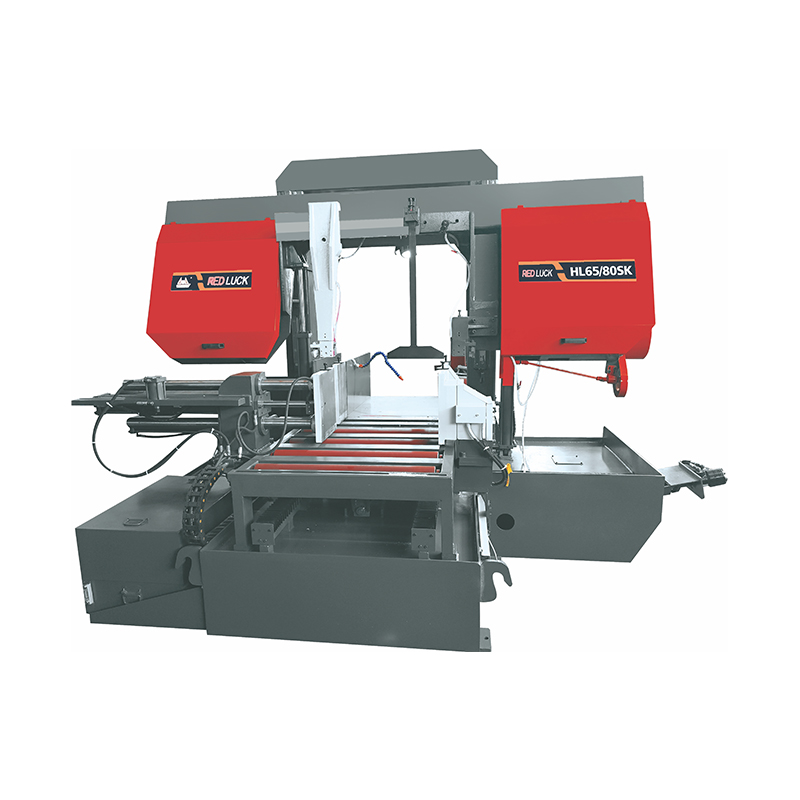How Programmable CNC Machines Revolutionize Custom Metal Fabrication
The metal fabrication industry has undergone a quiet revolution with the rise of programmable CNC technology. At the heart of this transformation lies the ability to combine precision engineering with flexible digital controls, enabling fabricators to tackle custom projects with high quality efficiency. Among the key players in this evolution are specialized machines like the double column band saw, versatile industrial saw machine configurations, and advanced vertical CNC machine systems - each bringing unique capabilities to modern workshops.

Traditional fabrication methods often struggled with complex geometries and tight tolerances required for custom work. Today's double column band saw models equipped with CNC controls solve this challenge by offering exceptional stability during cutting operations. Their rigid dual-column construction minimizes vibration when processing large or irregularly shaped metal pieces, while programmable automation ensures repeatable accuracy across production runs. This makes them particularly valuable for architectural metalwork and heavy equipment components where dimensional consistency matters.
The modern industrial saw machine has evolved far beyond simple cutting duties. When integrated with CNC technology, these workhorses become intelligent material preparation centers. A CNC-enabled industrial saw machine can automatically adjust blade speed, feed rate, and coolant flow based on material thickness and hardness - capabilities that directly benefit custom fabrication shops handling diverse project requirements. This adaptability reduces setup time between jobs, allowing faster transitions between different metals and profiles.
For operations requiring multi-axis precision, the vertical CNC machine offers distinct advantages in custom metal fabrication. Its space-efficient vertical orientation provides outstanding accessibility for complex machining operations, while the CNC integration allows for intricate contouring and profiling that would be impractical with manual methods. Many fabricators use vertical CNC machine systems for creating precision jigs, molds, and specialty components where traditional horizontal machines might struggle with workpiece orientation.
What truly sets these technologies apart is their interconnected workflow potential. A double column band saw might handle initial material breakdown, feeding pre-cut blanks to an industrial saw machine for secondary shaping, before final detailing on a vertical CNC machine. This seamless digital workflow eliminates measurement errors and material handling inefficiencies that previously plagued custom fabrication processes.
The programming flexibility of these systems deserves special attention. Modern CNC controls allow fabricators to store hundreds of cutting profiles for their industrial saw machine, instantly recalling settings for repeat orders or similar projects. Similarly, a vertical CNC machine can maintain libraries of tool paths for different materials and finishes, dramatically reducing programming time for custom components. Even the mighty double column band saw benefits from this digital memory, storing good cutting parameters for various structural shapes and alloys.
Maintenance considerations have also evolved with these advanced machines. While a traditional industrial saw machine required regular manual adjustments, today's CNC versions incorporate self-diagnostic systems that monitor blade tension, guide wear, and alignment. The double column band saw with CNC controls often includes predictive maintenance alerts, while a vertical CNC machine might automatically compensate for tool wear during extended production runs.
For custom metal fabricators considering upgrades, the choice between these technologies depends on specific needs. The double column band saw excels in heavy structural work, the industrial saw machine offers versatility for mixed material shops, and the vertical CNC machine provides precision for complex geometries. Many successful operations strategically deploy all three, creating a comprehensive digital fabrication ecosystem.
As these technologies continue advancing, we're seeing even smarter integration. Some forward-thinking shops now have their industrial saw machine automatically adjusting cutting plans based on real-time inventory data, while vertical CNC machine systems can import 3D models directly from design software. The double column band saw of tomorrow may feature AI-assisted cutting optimization, further reducing material waste on custom projects.

 English
English 中文简体
中文简体 русский
русский

